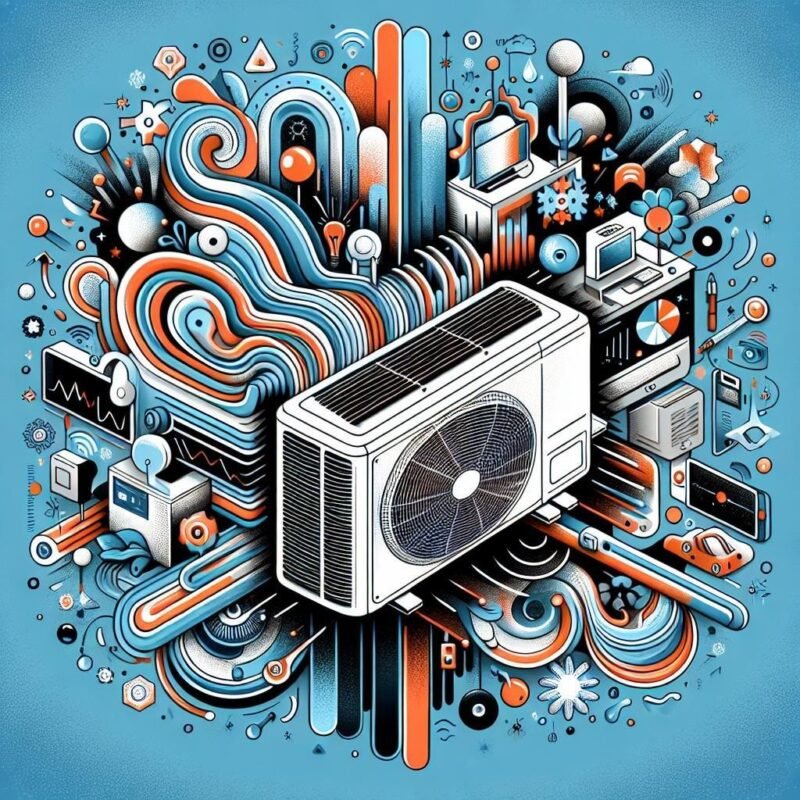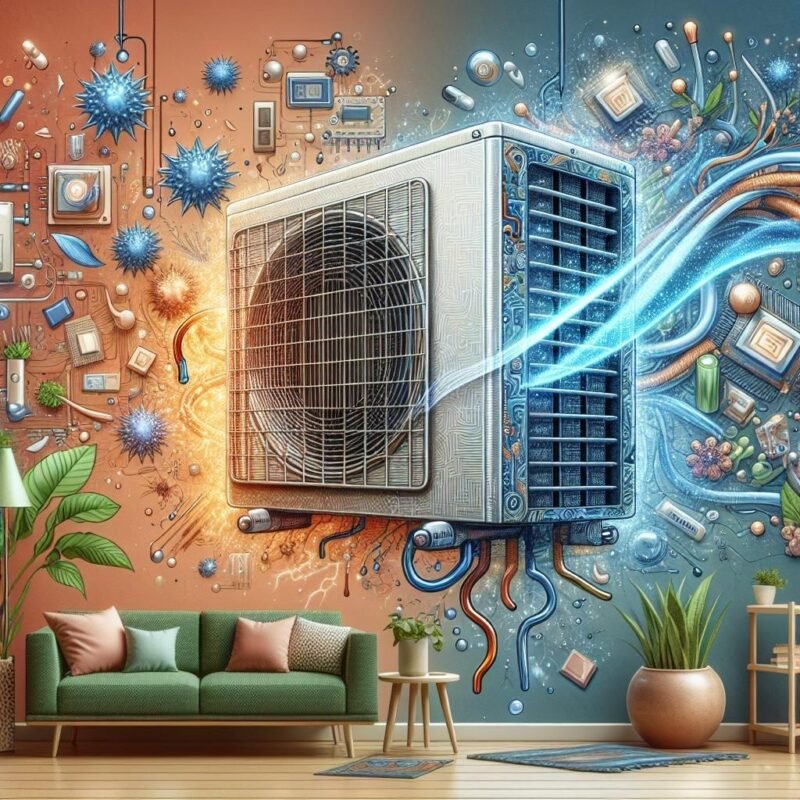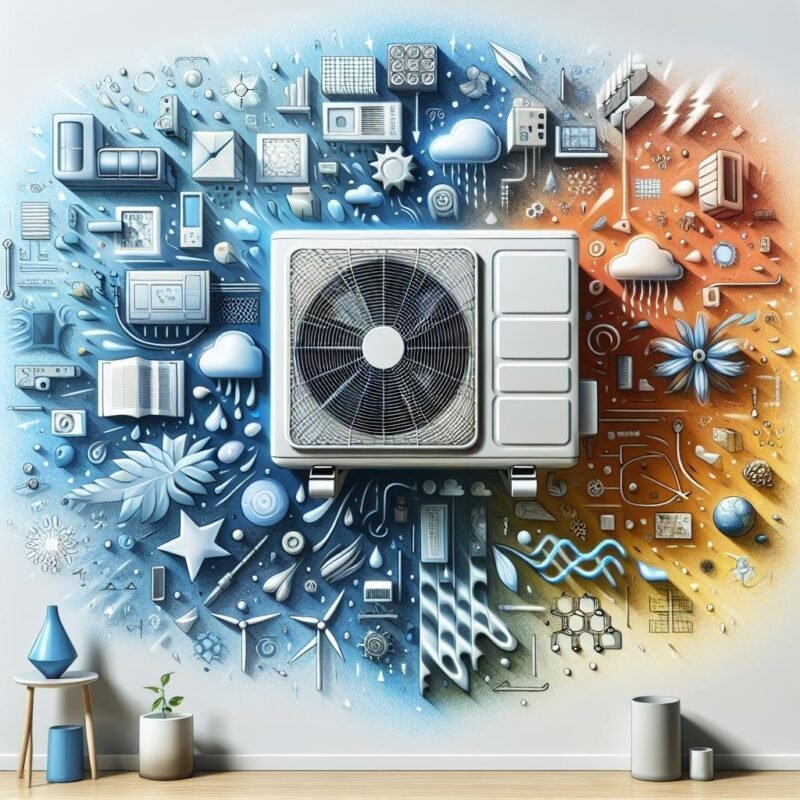Tips for Troubleshooting Error Codes on Your Mini Split AC Unit

Is yoru mini split AC unit giving you the cold shoulder with mysterious error codes? Don’t sweat it! Those blinking lights and cryptic numbers on your display might seem like hieroglyphics, but they’re actually your AC’s way of crying for help. Whether you’re facing an E1,F4,or any othre puzzling combination,understanding these digital distress signals can save you time,money,and a whole lot of headache. Let’s decode these pesky error messages and get your cool companion back to it’s chilly business!
Understanding Common Mini Split Error Code Patterns and Their Hidden Meanings
Decoding those mysterious numbers and letters flashing on your mini split display can feel like learning a foreign language. These digits often follow predictable patterns based on the system’s components: E1-E9 typically signal indoor unit issues, while F1-F9 usually indicate outdoor unit problems. Similarly, codes starting with “P” commonly point to power-related concerns, and “C” codes frequently highlight dialog breakdowns between components. Manufacturers cleverly design these patterns to help technicians and homeowners quickly narrow down the source of troubles.
While different brands may use distinct code combinations, they often share underlying logic in their error reporting systems. For instance, codes ending in odd numbers frequently relate to temperature sensor malfunctions, while even-numbered codes tend to flag operational issues. Here’s a quick reference guide for common patterns:
| Code Pattern | Common Meaning |
|---|---|
| E1-E3 | Indoor Sensor Issues |
| F4-F6 | Compressor Problems |
| P1-P2 | Voltage Irregularities |
| C5-C7 | Communication Errors |
Quick DIY Checks Before Calling the Pros: From Display Flashes to Power Cycles
Before spending money on professional repairs, try these simple diagnostic steps that coudl save you both time and cash. Start by checking your remote’s display screen – those tiny flashing symbols might actually be telling you exactly what’s wrong. Press and hold the reset button for 5 seconds, which often clears minor electronic hiccups. If you notice any unusual beeping patterns, write them down as they can be valuable clues to share with technicians later.
give your system a fresh start with a complete power cycle by turning off the circuit breaker for 10 minutes – this can resolve many common software glitches. While you wait, inspect these crucial components:
- Air filters for visible debris or blockage
- Outdoor unit for leaves or vegetation buildup
- Drain line for any obvious clogs
- Indoor unit for strange sounds or vibrations
| Common Flash Patterns | Possible Meaning |
|---|---|
| 1 Flash | Communication error |
| 2 Flashes | Sensor Issue |
| 3 Flashes | Refrigerant Problem |
Beyond the Basics: Advanced Error Code Solutions for Your Mini split System
Once you’ve mastered the common error codes, it’s time to tackle the more complex issues that can plague your mini split system.Temperature sensor malfunctions might display cryptic combinations like F1 or P4, which often require a methodical approach. Start by checking these advanced troubleshooting steps:
- Reset the main control board while holding the emergency button
- Verify voltage readings across terminal connections
- Inspect the thermistor resistance values
- Check for firmware update availability
Communication failures between indoor and outdoor units can trigger complex error sequences that might seem impossible to decode. When faced with these challenges, consult this quick reference guide:
| Error Pattern | Component | Advanced Solution |
|---|---|---|
| Blinking Red-Green | EEPROM | Clear memory cache |
| triple Flash | Inverter Board | Power cycle reset |
| Continuous Red | IPM Module | Voltage test |
Smart Troubleshooting: Essential Tools and Methods for Decoding AC Problems
Equipping yourself with the right diagnostic arsenal is crucial when tackling those mysterious error codes. A quality multimeter stands as your primary weapon, helping you measure voltage, resistance, and continuity across your mini split’s components. Pair this with a reliable manifold gauge set to monitor refrigerant pressures and a thermal imaging camera to spot temperature irregularities. These tools, combined with manufacturer-specific diagnostic apps, create a powerful troubleshooting ecosystem that transforms guesswork into precise problem-solving.
Beyond the physical tools, mastering systematic debugging approaches elevates your troubleshooting game.Start with these proven methods:
- Documentation First: Record all error codes and system behaviors meticulously
- Pattern Recognition: Track when and how frequently issues occur
- Environmental Analysis: Consider external factors like weather and usage patterns
- Component Isolation: Test individual parts systematically to pinpoint failures
| Tool Type | primary Function | Skill Level Required |
|---|---|---|
| Multimeter | Electrical testing | intermediate |
| Thermal Camera | Heat pattern analysis | Beginner |
| diagnostic App | Code interpretation | Basic |
Q&A
Q&A: Troubleshooting Error Codes on Your Mini Split AC Unit
Q: What are some common error codes I might see on my mini split AC unit?
A: Ah, the mysterious world of error codes! Common culprits include codes like “E1” or “E2,” which often indicate sensor issues, and “U4,” which signals communication problems between the indoor and outdoor units. Each code has its own tale to tell, so don’t shy away—grab your manual and investigate!
Q: How can I interpret what these error codes mean?
A: Think of your mini split as a cryptic chatty friend! The best way to decode their messages? The owner’s manual! Most manuals include a section dedicated to error codes, which translates their cryptic language into plain English. If your manual is missing,spend a few minutes online—many manufacturers provide digital versions.
Q: what are the first steps I should take when I see an error code?
A: First things first—don’t panic! Take a deep breath and make sure the unit is off before proceeding. Check for any visible problems, like blocked vents or dirty filters. then,reset the unit by turning it off at the power switch and waiting for a few minutes before turning it back on. Sometimes,your mini split just needs a little timeout!
Q: Can I fix these errors myself,or should I call a professional?
A: Well,that depends! Simple fixes—like cleaning filters or adjusting thermostat settings—are often DIY-friendly.However, if you’re facing complex issues like refrigerant leaks or electrical failures, it’s best to call in the pros. They have the tools and expertise to handle matters safely and efficiently!
Q: What maintenance can I do to prevent future error codes?
A: Prevention is the name of the game! Regular maintenance is key. Dust those filters monthly, clean the outdoor unit, ensure there’s no blockage at the vents, and schedule annual check-ups with a professional. Keeping your mini split in tip-top shape can help avoid the dreaded “error” encounter!
Q: Are there any warning signs I should watch for before error codes appear?
A: Absolutely! Keep an eye (or ear) out for signs such as strange noises, inconsistent cooling, or unusual smells. These can be clues that your unit is trying to whisper a warning. Addressing these issues early can prevent a full-blown error code crisis later on!
Q: any final tips for keeping my relationship with my mini split harmonious?
A: Communication is key in any relationship—even with your mini split! Stay vigilant with regular check-ups and promptly address any strange symptoms. And remember, patience is critically important; troubleshooting sometimes takes a little time and a lot of love! Happy cooling!
In Summary
As we wrap up our troubleshooting journey through the world of mini split AC units, remember that a little patience and knowledge can go a long way in keeping your cool. Whether you’re battling error codes or simply trying to make sense of those blinking lights, each step you take brings you closer to a breezy solution. Don’t hesitate to take a break,gather your thoughts,and return with a fresh perspective—sometimes a clear mind is the best tool in your troubleshooting arsenal.
so, the next time your air conditioner throws a curveball your way, don’t panic! Armed with these tips and a sprinkle of curiosity, you’re well-equipped to tackle those pesky error codes head-on. Keep your cool, and soon enough, you’ll be back to enjoying the perfect climate—one agreeable breath at a time. Here’s to a peaceful, error-free AC experience ahead! Stay cool, friends!






















